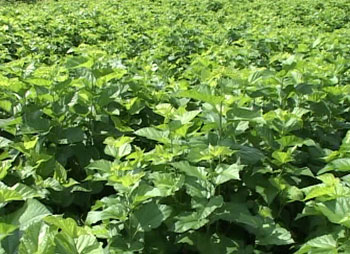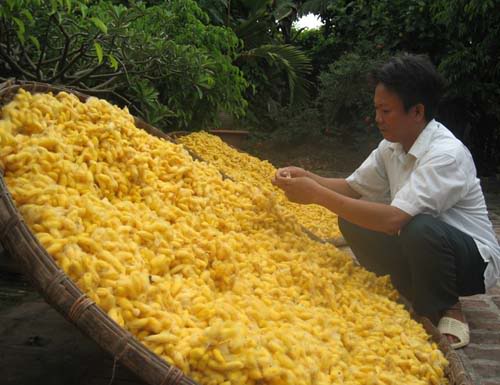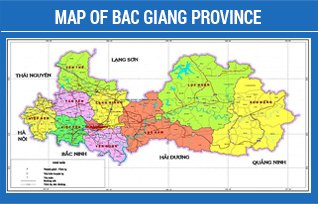Village specializing in farmingmulberry trees and silkworms
Over more than 800 years of development, Bac Giang Provincial People's Committee issued Decision No. 170 / QD-UBND dated 2 November 2010 to grant certificaterecognizing traditional trade village for Mai Thuong farming mulberry tree and silkworm village in Mai Dinh commune, Hiep Hoa district. This is not only to honor traditional trade but also makesignificantcontribution to preserving and promoting the cultural identity of a land rich in cultural tradition lying along the banks of Cau River.


Planting mulberry trees and raising silkworms require constant attentionof the farmerswho are as busy as they are in period of caring babies; therefore, only family with regularly available labor can do this job. In particular, raising silkworms is the most important process deciding capacity andquality of silk and cocoon product as well as economic benefits of this mulberry tree cultivating and silkworm breedingcraft. It requires strict time schedule and procedure, gentle labor with high technique. By the silkworms undergo mature stage with 4 sleepingperiods;they begin to eat fast and a lot.According to experience of silkworm breeders,in order that silkworms release silk, cocoons, after their sleeping periods, we have to feed silkworms every 2 hours. Another important stageis that when the golden silkworms are harvested, it is essential to quickly move to dry places to spin into cocoons to avoid eye irritation.
In Mai Thuong, silkwormbreeders always keep sense of solidarity and support each other. As a verbal agreement, wheneversomeone needs a help, he or she just says to the neighbor and the demandis immediately met.
In addition, the final stage to have quality products is when silkwormsare turning into cocoons, farmers have to "sunbathe" and "dry" cocoons in order to get dry, aromatic cocoons that do not dissolve when unwindingthe silk thread. Mulberry planting - silkworm rearing –cocoon storing is a harmonious and inseparable cohesion;yellow silkworms only eat mulberry leaves and only those release the bright yellow, smooth and cool silk. Thuong Mai villagers know that better than any others so they pay great attention to planting mulberry tree stage. Mulberry leaves must be clean and grown far from the pipe tobacco, peppers and other crops fields to ensure silk quality.
In Hiep Hoa district, besides Mai Dinh commune, sericulture has developed in Hop Thinh commune for a long time. Currently,Hop Thinh has more than 1,400 households doing sericulture in the area of over 40 hectares. People here cannot remember when this "stand to eat" jobstarted. Over the ups and downs, sometimes seemed to be oblivious, but the local people still stick to preserving traditional craft inherited from their forefathers
Ninh Tao hamlet is a place with the largest area planted mulberry trees in the commune. Almost households in the village breed silkwormswith the quantity from some to tens broad flat-drying baskets. Along with Ninh Tao hamlet, some riverside hamlets like Da Hoi, Dong Dao, Ninh Huong with silt mudflats ofCau River remains sericulture not only because the land here is very suitable for mulberry treesand but also because this job has brought prosperity to many households along Cau River.

golden cocoon for bumper harvests.
With the potentials and advantages of the village, in the period of intensive international integration, sericulture opens up opportunities for domestic and overseas people and enterprisesto expand production cooperation and investment; thereby, creating unique products from silk and increasing value to the textile and garment industry of Vietnam; while empowering craft villages, increasing income for local people and contributing to preserving and developing craft villages towards sustainability.

